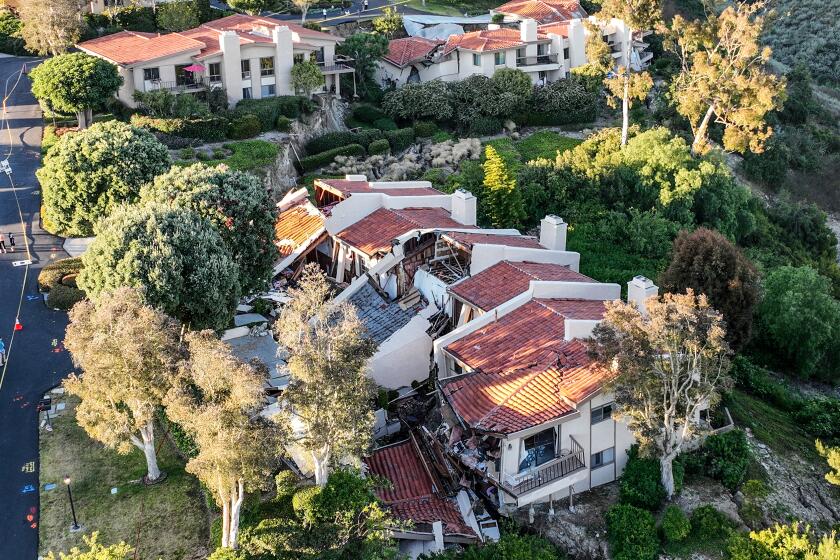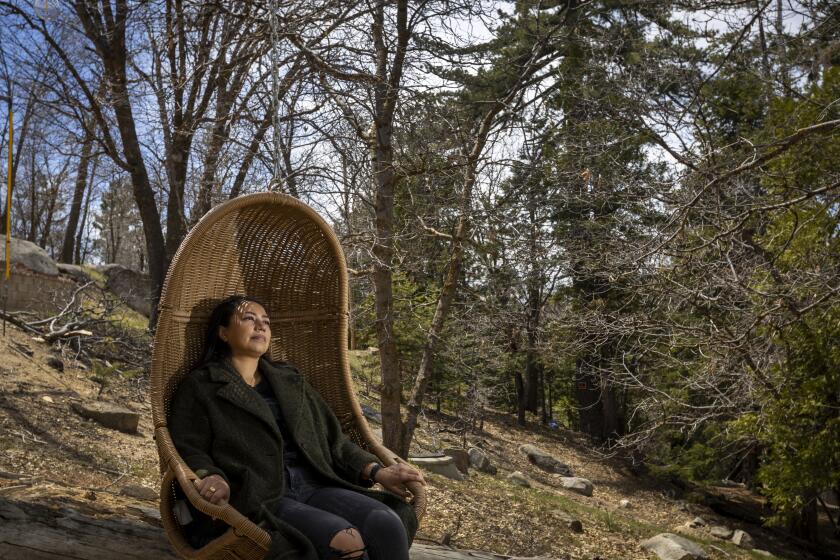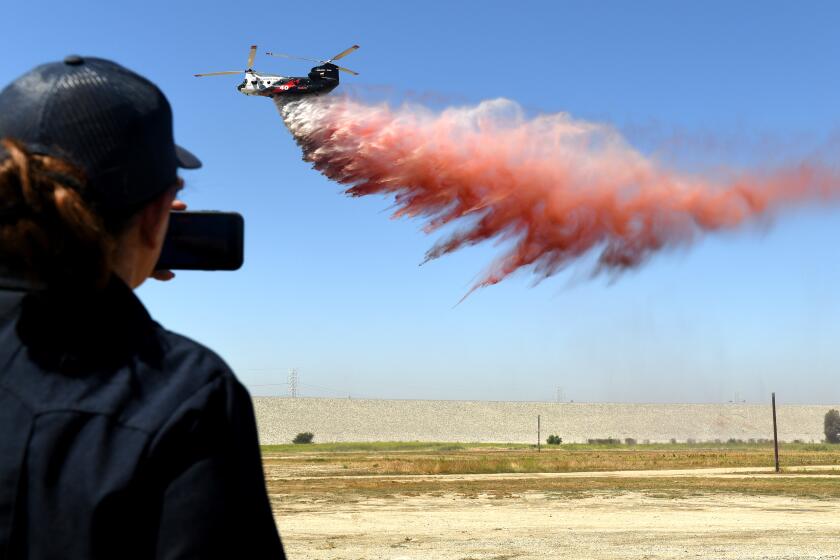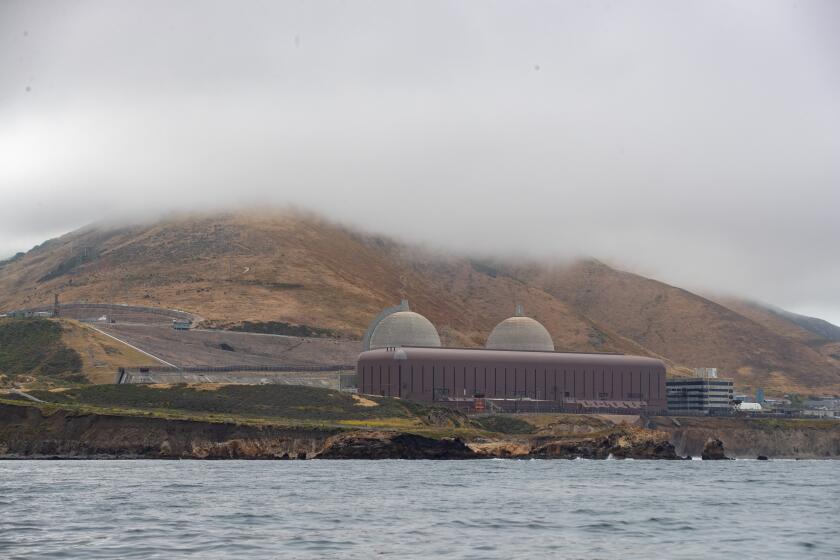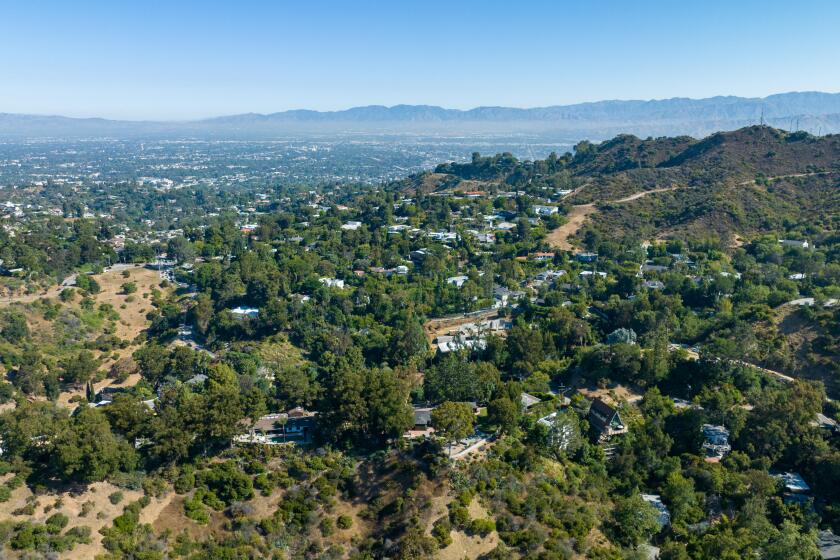Fires, landslides, rising seas: What drives Californians to stay in disaster-prone areas?
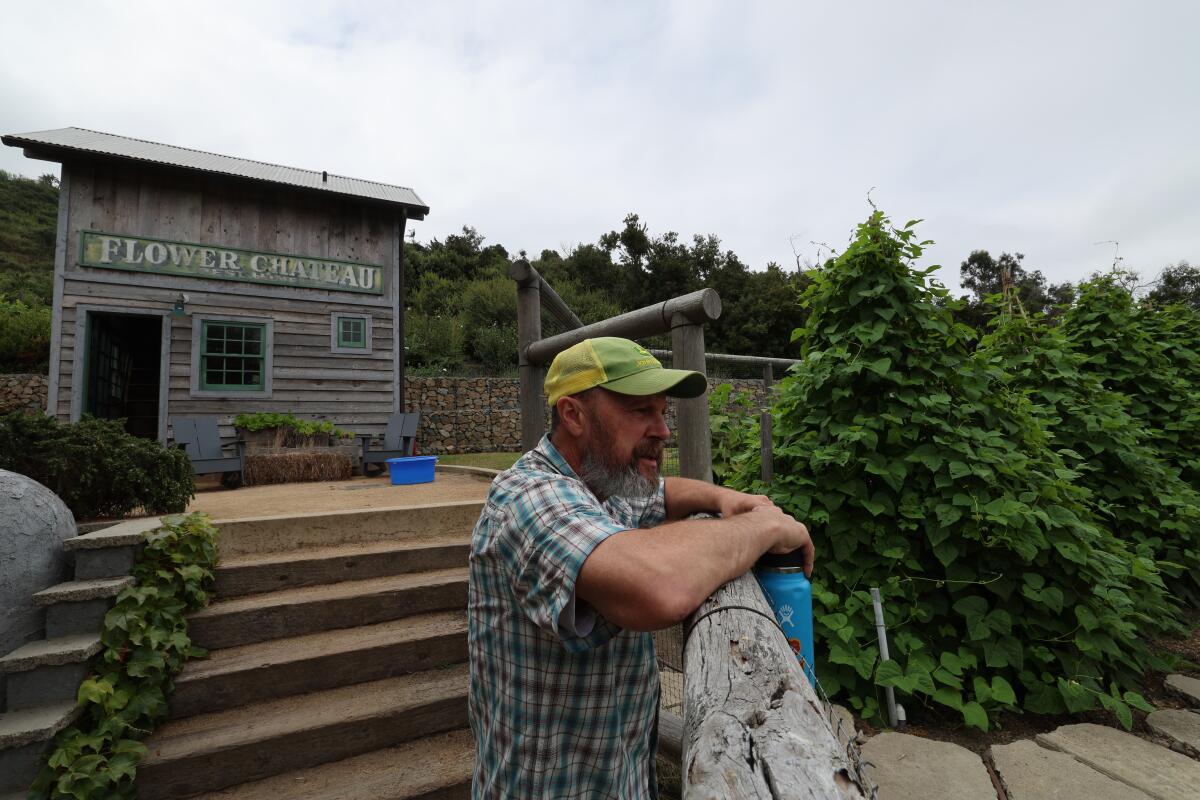
- Share via
A landslide struck Laguna Beach’s Bluebird Canyon in 1978 — smashing cars, buckling streets and destroying 24 homes. An adjacent swath of earth broke loose in 2005, wiping out 12 more homes.
That wasn’t enough to keep Scott Tenney away. In 2010, Tenney and his wife, Mariella Simon, bought a 15-acre hillside ranch near the disaster area despite the listing warning that the property was on the site of an ancient landslide.
“We knew we’d have to do a bit of terracing and retaining, but California is what it is,” Tenney said. “It’s a dynamic place not just culturally, but geologically.”
From an outside perspective, his might seem a confounding decision. But in Southern California it’s an extremely common one, because that geological diversity, as Tenney calls it, is not just the danger. It’s the allure.
Elevation has long been aspirational here — an escape from the urban flats.
Since settlers first started pouring in from the relative flatness of the East Coast and Midwest, they were captivated by California’s vertiginous landscape. Plein air painters flocked to capture the light of the arroyos. Health seekers sought the clean air of the San Gabriel foothills. Folk rockers found inspiration in Laurel and Topanga canyons. And the moneyed elite started building their houses higher and higher above the basin, forever seeking the trophy perch with the show-off view.
But that perch has always come at the risk of catastrophe. Homes slide into a gulch in Palos Verdes. Fires roar over the Malibu hills. A debris flow kills 23 people and destroys 130 homes in Montecito. Heavy snow traps thousands in the San Bernardino Mountains. And winter storms pull fragile bluffs into a rising sea.
Questions mount in the wake of the land movement in Rolling Hills Estates, a city that many residents assumed was safe from such disasters.
These natural disasters so often occur where the tectonic plates collided and folded into beautiful vistas.
While other regions may face only one main disaster threat — tornadoes in the Midwest, hurricanes on the Gulf and East coasts — California’s extreme topography brings siege from all sides: the ocean, the trees and brush, the sky above and the ground below. And oftentimes, the most attractive areas are some of the most dangerous.
A land of disasters
More and more people are crowding into the Wildland Urban Interface — the zone of transition between unoccupied land and human development. It’s where properties mingle with undeveloped (and often steep) land, and it’s uniquely susceptible to natural disasters.
According to the U.S. Fire Administration, this area grows by 2 million acres a year as people fan out to the edges of wilderness in search of affordable houses, more space or simply a break from life in the city. And California holds more homes in this dangerous zone than any other state in the country.
And prices keep soaring. It doesn’t matter if a house sits on stilts on the side of a cliff, if it’s a landslide complex slowly sliding toward the sea, or if it’s predicted to be knee-deep in water in a couple of generations — there will always be a buyer.

Subscribers get exclusive access to this story
We’re offering L.A. Times subscribers special access to our best journalism. Thank you for your support.
Explore more Subscriber Exclusive content.
As Californians flock to risky areas, disasters take a greater toll. Over the last decade, the state has experienced 20 disasters that each cost at least $1 billion in damage from flooding, wildfire and extreme heat. Those 20 alone combined for 783 deaths, according to National Centers for Environmental Information.
According to the real estate listing database Redfin, the trend is nationwide. Last year, the country’s most flood-prone, heat-prone and fire-prone counties all saw more people move in than out. Redfin researcher Sheharyar Bokhari blames one primary factor: the housing affordability crisis.
“L.A. and most other coastal cities are expensive. With remote work becoming more of an option, people are finding they can have more space and finally afford a home if they move to riskier areas,” he said.
Bokhari said another L.A.-specific factor is development — mainly that there’s not as much being built in the city compared to the more rural areas surrounding it.
He points to the Inland Empire, which is typically more affordable than L.A. County. In Riverside County, roughly 600,000 homes face a high risk of wildfire, the most of any of the 306 high-fire-risk counties in the country. Despite that, the county’s population grew by 40,000 over the last two years.
Riverside and San Bernardino counties saw population gains as California overall lost nearly 262,000 residents between July 2020 and July 2021.
Even if experts — and common sense — say to stay away from certain areas, Bokhari said that won’t likely happen because local governments aren’t incentivized to push people out.
“These disaster-prone cities need revenue and people paying taxes,” he said. “They just claim that they’ll be more resilient and take more safety measures going forward,” he said.
Where else would I go?
Since moving onto the ancient landslide zone, Tenney and his wife founded Bluebird Canyon Farms, which offers workshops and grows food for local markets. His time is split between that and taming the erosion-prone land beneath the farm.
To combat sliding land, Tenney installed a gravity wall, 200 feet long and 9 feet tall, to retain the hillside. In addition to grading the terrain to make the slopes gentler, he added powerful drainage systems and timber-and-concrete cribbing to keep structures in place.
The work never stops, and Tenney keeps a monthly schedule to keep up with tasks. Clear brush in spring. Clean storm drains in September. Inspect terracing every few months.
Sign up for This Evening's Big Stories
Catch up on the day with the 7 biggest L.A. Times stories in your inbox every weekday evening.
You may occasionally receive promotional content from the Los Angeles Times.
“You can run but you can’t hide,” he said, adding that urban centers such as L.A. have their own laundry lists of things to worry about: crime, homelessness, etc. “You won’t experience a wildfire in downtown L.A., but there are plenty of other things to be concerned with.”
Cribbing systems used by Tenney have become commonplace in Portuguese Bend, a small coastal community on the Palos Verdes Peninsula situated on a slow-moving landslide complex. Land moves up to 8 feet a year, and at that rate residents would rather ride the sliding earth toward the sea than sell and move somewhere else.
“I’ll be here until I can’t be here anymore. I’ll slide away with the land,” Claudia Gutierrez told The Times in July after a nearby landslide in Rolling Hills Estates sent a handful of homes careening down a canyon.
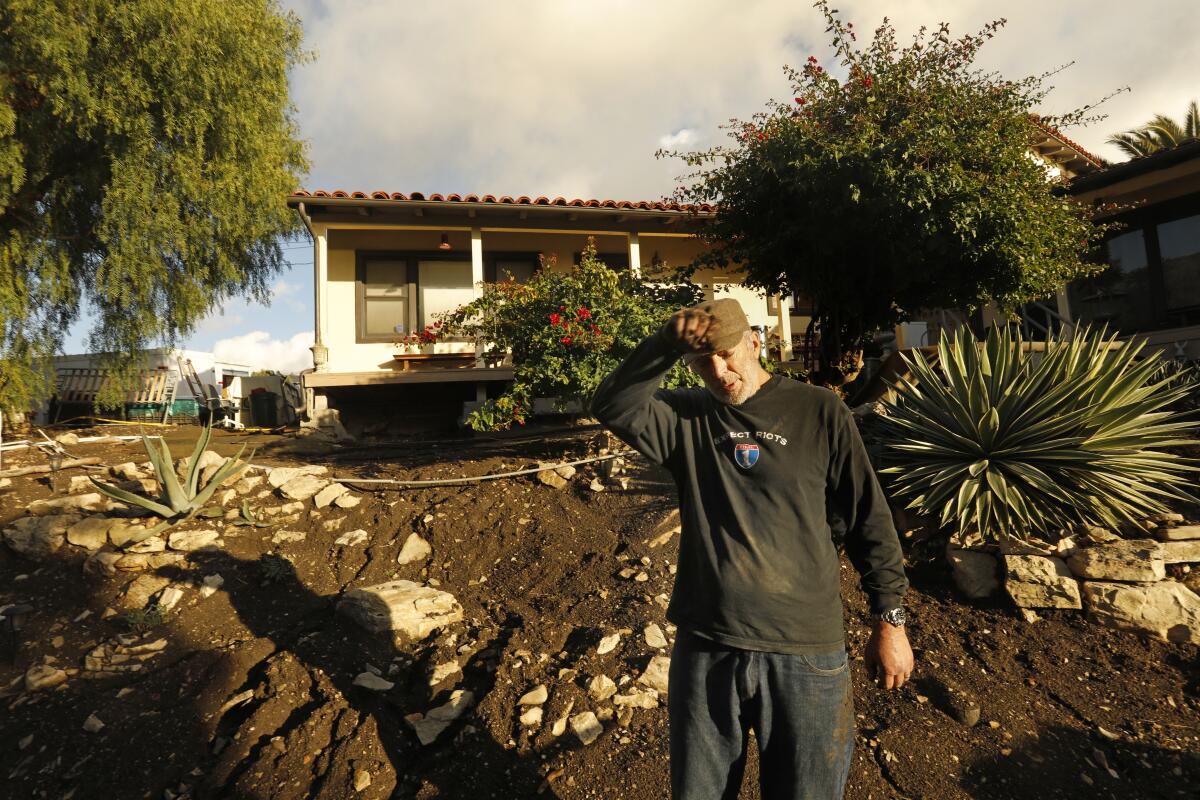
You’d think the real estate market in disaster-prone areas would eventually slow down, but there are no deals to be found for house hunters. Longtime residents often stay put post-disaster, and incoming residents consistently pay a premium to live in a scenic, though potentially dangerous, area.
In cities tucked among the foothills of the Verdugo and San Gabriel mountains such as Altadena and La Cañada Flintridge, buying in a high-fire-risk zone might be ever-so-slightly cheaper than buying in a safer place. And buyers pounce.
“My clients try to choose low-fire-risk zones, but if the house in the fire zone is the right price, that is more important,” said Brent Chang of Compass.
When Lisa and Michael McKean got home to Malibu Park from their honeymoon on Nov. 8, 2018, they were so exhausted that they went straight to sleep. The newlyweds didn’t even bother unpacking their suitcases of swimsuits still wet with Caribbean saltwater.
When they woke up, Lisa looked out her back window and saw a 10,000-foot cloud of billowing black smoke.
The Woolsey fire was ravaging the Malibu hills.
The pair grabbed their still-packed suitcases and fled to the Zuma Beach parking lot, where they spent the day surrounded by horses, dogs, cats and neighbors all wondering if their homes would survive.
Theirs, built a year earlier, did not.
“The entire neighborhood burned,” Lisa said. “Everything was black, scorched earth.”
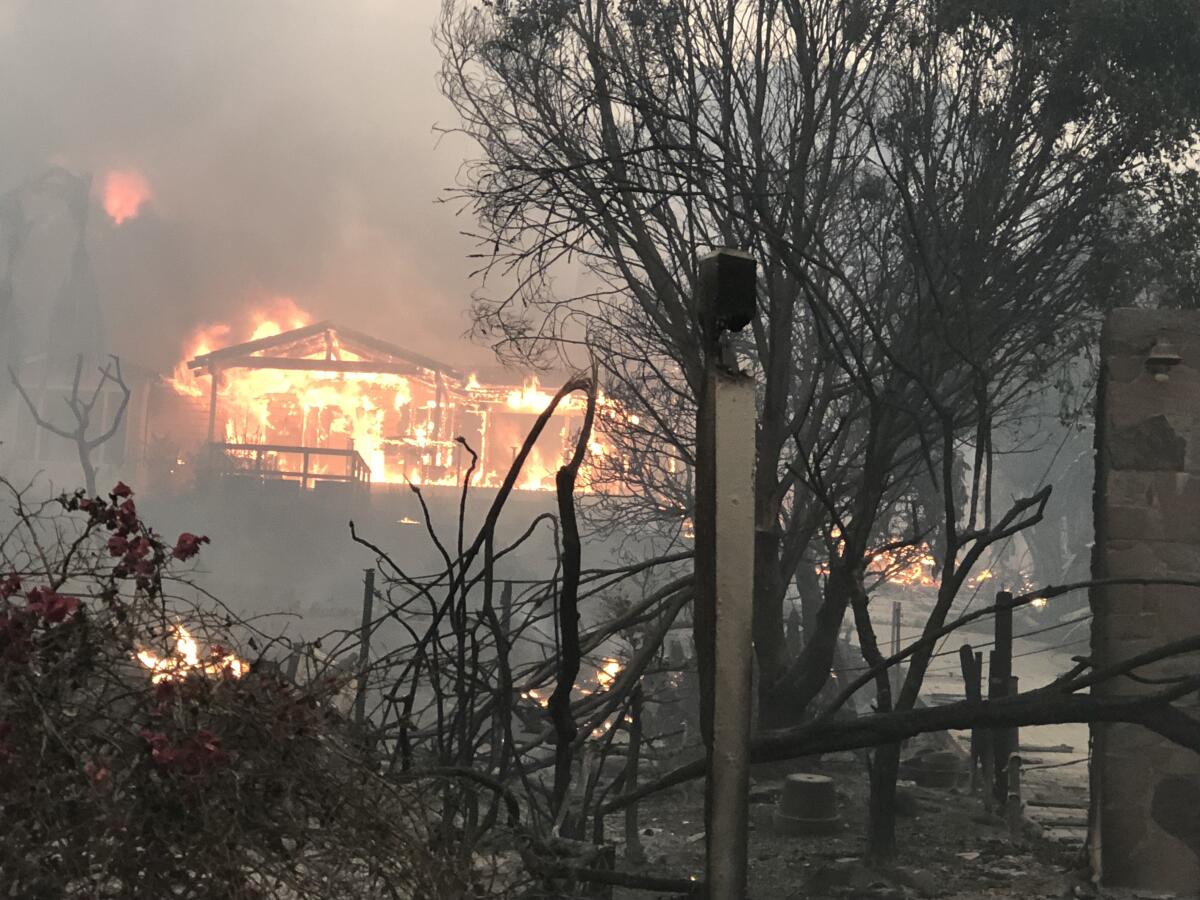
Devastated, the pair spent six months crunching numbers on the cost of rebuilding versus moving. The home that was destroyed had taken four years to approve and three years to build. Their next one could take even longer.
Despite the damage, and despite the ceaseless, inescapable risk of a future fire, they ultimately decided to stay and rebuild.
Cheryl Calvert has lived in Malibu since 1985 and has adapted to a life of fire. To her, the flames are nearly routine.
“Once you make it through your first one, you realize it’s manageable. But you have to plan ahead,” Calvert said.
She keeps two bags packed at all times: one full of goggles and N95 masks and one with dog supplies.
Calvert has experienced plenty of fires during her time in the coastal community, but the worst was the Corral fire in 2007. She was in the driveway as the flames arrived, and she sprayed the corner of her wooden home with a hose as it ignited. Her guesthouse and garage burned down, but the house was saved.
She never considered leaving. Instead, she became more prepared, installing an extra water tank and leaving a pair of shoes by the front door at all times for quick escapes.
“We have to do crazy things, but it’s only crazy for an hour or two every five or 10 years,” she said.
The Quick Reaction Force from the Los Angeles, Ventura and Orange county fire departments will be available 24 hours a day all year long.
She ran down the usual list of reasons why people move to Malibu: the beautiful landscape, the ocean breeze, the sweeping views. But she said the main reason her and so many of her neighbors stay is because of the community.
“We’re all living near like-minded people who are willing to risk themselves for each other,” she said. “It’s a bunch of hippies. Rich hippies.”
The psychology of staying
A life among the trees, coasts and cliffs is often what lures Californians to disaster-prone communities, but according to experts, the factors that make them stay after a disaster strikes are much more complicated.
Age, race and class can all indicate whether someone is more or less likely to move after experiencing a disaster. For example, Zhen Cong, professor of environmental health sciences at the University of Alabama at Birmingham, found that in the wake of tornados, the middle class might be the most inclined to move since the upper class has the resources to stay and rebuild, while the lower class is often trapped and has no other choice but to stay.
Other relocation factors include the level of damage to the home and whether the person owns the place or rents. But often the most important factor is one that can’t be easily quantified: “People who have a strong sense of place and a strong sense of community are less likely to move,” Cong said.
Ironically, some disasters can even encourage people who otherwise would have left to stay.
In studying post-tornado relocation decisions across the country, Cong found that after a disaster, people increase their disaster preparedness. Part of that includes gathering supplies, but it also includes social engagement: talking to neighbors, sharing information on social media and attending meetings. That engagement, which might not happen if a tornado doesn’t strike, brings a greater sense of community, leading people to stay in that community.
Gov. Gavin Newsom is pushing to keep Diablo Canyon open past its 2025 shutdown deadline.
Anamaria Bukvic, an assistant professor at Virginia Tech who studies coastal hazards and population displacement, found that after Hurricane Sandy struck the East Coast in 2012, non-geophysical factors mattered the most in deciding whether to stay or leave. For example, confidence in adapting to future disasters was a more relevant indicator if someone would stay than how close they lived to the ocean.
“The experience of flooding can be emotionally disturbing and traumatic,” Bukvic said. “When facing problems, some people try to avoid them. Others try to resolve them.”
She added that confidence in government plays a major role as well. If a person believes the government responded well to the disaster and will keep them safe during the next disaster, they’re more likely to stay.
That’s something that Malibu Mayor Bruce Silverstein thinks about when overseeing the city’s disaster response plan. Although L.A. County is responsible for physically fighting the fires that plague the area, Malibu has instituted a free service in which residents can request a fire-hardening expert to inspect their property to better prepare them for the next blaze.
The city also outlaws certain types of vegetation susceptible to fire and tries to prevent excessive population growth in order to make evacuation from hills and canyons easier during emergencies. It’s the main reason accessory dwelling units (ADUs) are harder to build in Malibu than L.A.
“Unlike L.A., we don’t have standards that encourage growth,” Silverstein said. “We maintain the status quo and try to keep space between properties so if one catches on fire, it doesn’t extend to the neighbors.”
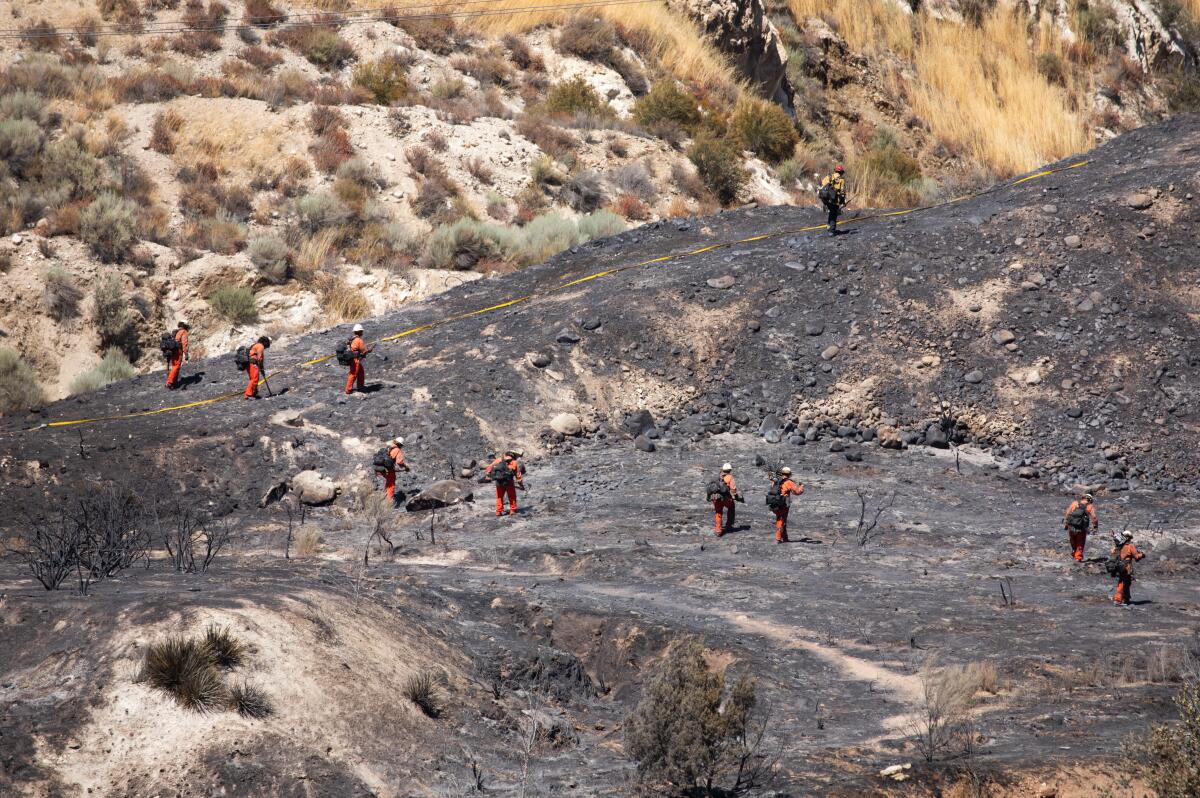
Michael Dyer, a former Santa Barbara County fire chief who now serves as public safety director for Calabasas, said safety became a top priority for the city after Woolsey, energizing the community into forming multiple volunteer commissions that plan for disaster preparedness.
“We have to provide that service as a government,” Dyer said while monitoring a brush fire in Topanga from his front porch. “No one has forgotten Woolsey yet. And as long as I’m here, we won’t.”
No simple fix
As the climate crisis worsens and the Wildland Urban Interface grows in size, experts are eyeing ways to mitigate the effects of natural disasters to save both the environment and human lives.
L.A. is currently considering an ordinance that would limit development in the Santa Monica Mountains. Using recent wildfires and the Rolling Hills Estates landslide as examples, supporters said the measure would make it harder to build mansions and large hillside homes as a way to limit damage caused by disasters, as well as protect open space and wildlife.
L.A. is poised to pass tougher regulations for building in the hillsides between the 101 and 405 freeways. Gwyneth Paltrow is among the measure’s opponents.
In addition, national insurers such as State Farm and Allstate are no longer selling insurance policies in wildfire-prone areas after a series of catastrophic fires raised premiums. Without insurance, people might be disincentivized from buying and building homes in risky areas.
Redfin is also tinkering with a way to warn people of a home’s potential dangers. The company conducted an experiment in which it showed a listing’s flood risk score to certain users but not others and found that those who were shown the scores were less likely to bid on the home.
The scores have since expanded to show risk for fire, heat, drought and storms.
In the meantime, Californians continue to build, and rebuild, in disaster-prone areas. Lisa and Michael McKean, whose home burned down in 2018, moved back into Malibu Park in 2021.
As neighbors slowly filter back into the neighborhood, they walk around to measure progress and congratulate those who have returned.
“We used to hate cement trucks and jackhammers, but now we celebrate them,” Michael said. “The cheery sound of construction.”
More to Read
Sign up for Essential California
The most important California stories and recommendations in your inbox every morning.
You may occasionally receive promotional content from the Los Angeles Times.
